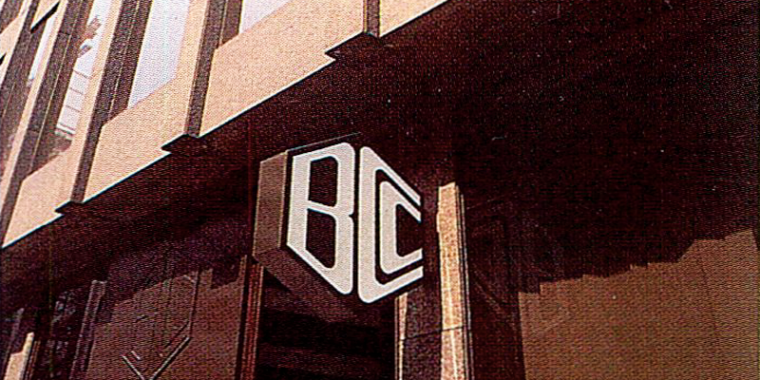
Translation of an article in the February 1985 issue of Wirtschaftswoche, one of the most highly respected Business Magazines in Germany.
Bank of Credit and Commerce in London has grown faster than almost any other international bank. Its shareholders are sheikhs and princes, its managers Asians.
At the beginning of 1984 the bank that "Asians look upon as their own" was hailed enthusiastically by an Indian business journal as the hero of an international success story. In the meantime, at Bank of Credit and Commerce International SA, nothing has changed: it is growing and growing. But the days when it could be called a bank for Asians are long past: with around 12,000 employees in more than 380 offices and branches, BCCI is now represented in 70 countries.
But it is not because of its multinational character that BCCI has set tongues wagging, excited admiration and provoked occasional criticism. The real reason is its phenomenal growth in a little under 13 years. Started only in 1972, its mere $2.5 million of initial equity has so far grown to about 400 times the original figure, representing the solid foundation for a balance sheet volume of over $13 billion.
"We won't be able to keep up the percentage growth rate we had in the past, of course, but continue to grow we will," says one of the senior executives, trying to put a damper on overly optimistic expectations. However, his faith in the concept and future of the bank is infectious.
"It's quite simple, we follow people and trade." That is one executive's description of BCCI strategy - a description which is something of an understatement. The bank's success has been astonishing; its profits have also grown many times over in the past few years. In 1984 they probably topped $350 million - more than a quarter up from the previous year. Last year the bank caught the eye of business journal Euromoney, with its 1982 international ranking: although it was only 146th in terms of deposits it was number 58 for profitability. In fact, over the past few years its growth is said to have proved the second fastest in the world.
In London they are proud of the fact that their shareholders have steadily extended the bank's capital base - out of their own pocket or through retained earnings. By the end of 1984 the equity cover probably reached the $1 billion mark. But nobody is even dreaming of converting the princely bank into a public corporation. Its only borrowings in 1983 were $50 million raised on the Euromarket by note issues.
There's no doubt that the bank's success story is closely linked to the ability and charisma of its President, Agha Hasan Abedi. In Pakistan, in the 60s, Abedi, with the help of wealthy backers, founded the United Bank of Pakistan (UBL), hoisting it in the space of ten years to the position of second biggest bank in the country. At the beginning of the 70s, when the bank was threatened with nationalisation, he set about realising his ambition of founding an international bank. He found ready backing in the Gulf states, just when the region was beginning to enjoy an apparently never-ending oil price boom.
Abedi brought his team right along with him - some of them from UBL, the others from all over the entire Indian subcontinent. Today, 13 years later, Asians still account for the majority of BCCI's senior management.
When the bank was formed in 1972, with single branches in Abu Dhabi, Luxembourg and London, one of the founders was Bank of America, which saw it as a good opportunity of gaining a foothold in the Middle East. BCCI, in turn, profited from its prestigious connection. Eight years later, however, each went its own way: Bank of America sold its interest, raised meanwhile to 30%, to the existing shareholders, planning to run its Middle East business itself. For BCCI, because of the peculiarities of US banking legislation, this step facilitated access to the American market, where it is now represented in Florida, California and New York.
BCCI's growth strategy creates the impression of a well contrived plan for a military operation. BCC executives speak of four growth phases. "To begin with we grew in and together with the Middle East, and did so quite substantially." As was only to be expected, the smart managers concentrated their efforts there primarily on the oil-producing states. The second burst of expansion was in Africa. "Today we are the bank with the most branches there in the most countries," say BCC executives. At the same time, the bank began to gain a further foothold in continental Europe.
As a result, BCCI now proudly flies its flag in France, Italy, Luxembourg, Monaco, Portugal, Spain and Switzerland. In Hamburg and Frankfurt BCCI has been represented since the second half of the 70s. Thirsting for expansion, the bankers turned their attention towards the end of the 70s to the Far East, establishing themselves by takeovers and new branches in Hong Kong, Korea, the Philippines, Pakistan, India and Thailand.
In the present, fourth growth phase, which started at the beginning of the 80s, what is often called "the first multinational bank outside the OECD" has been expanding in North America and, above all, in Latin America. In Panama, Colombia and Venezuela it has already seen its opportunities - in spite of the fact that the continent, shaken by austerity and political unrest as it is, is likely to remain overindebted for years to come.
BCCI managers are perfectly familiar with the problems and special needs of the region and show no signs of wavering. "We follow the people and the streams of goods flowing between the developing countries and the industrialised world," as the bank's executives put it. In the Spanish speaking world in particular, they foresee a rapidly growing exchange of goods, people and ideas. In Spain and Colombia they've already prepared for it by taking over two banks with no fewer than 50 branches.

BCCI also sees great promise in trade between China and India, and between these two countries and the rest of the world. Conversely, the bank is now less dependent on Middle East deposits and business. At the end of 1983 this region accounted for only a bare quarter of its total deposits and lendings.
In the balance sheet the most striking manifestation of the gentle art of keeping up with international trade is to be seen in the unusually high proportion of total lendings represented by trade financing. Of the total 1983 year-end advances of $4.1 billion, almost 60% were tied up in short-term trade financing. And the bank has no plans to change this percentage for the time being.
It is also striking that the bank finances itself almost entirely by means of deposits; in other words, it does not have to depend on interbank money. Normally, it keeps more than 40% of its resources in liquid form.
BCC' s President seems to be more concerned about discharging his role of representative of the Third World's first multinational bank with the necessary dignity than going in for a lot of propaganda. A deliberately low-profile attitude, one might think. But not as far as the Third World itself is concerned. There, BCCI sponsors a number of foundations whose activities include awarding prizes for special services to developing countries. And critical publications like the monthly South try to promote a better worldwide understanding for developing countries - not by begging, but by disseminating hard facts about them.
In Abedi's phraseology, his staff figure as the "BCCI family". His philosophy is aimed "not only at material values" but also at blessing "as many people as possible with as much happiness as possible". The only way to preserve the loyalty of his employees, he believes, is by "purity and humility".
It seems to accord with philosopher Abedi's self-conception that he does not barricade himself in presidential dignity and inaccessibility in a president's office, but shares an open-plan office with his colleagues. "That's how we do things in most of our offices, all over the world," an executive hastens to say.